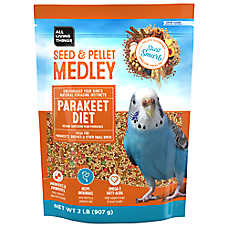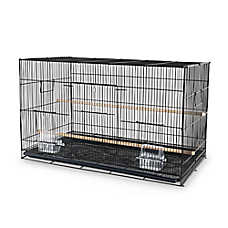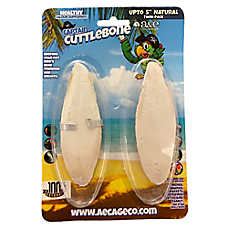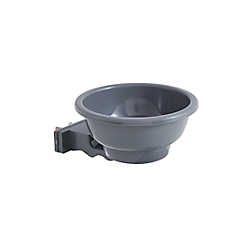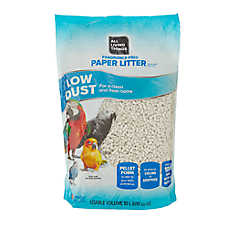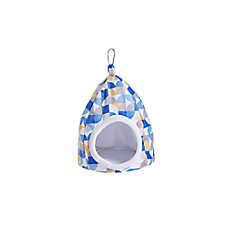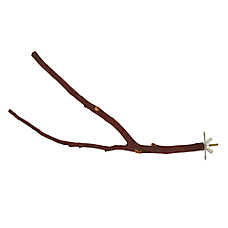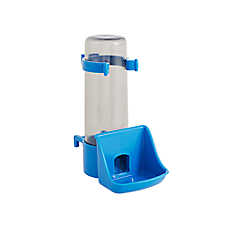Lineolated Parakeet Care Guide
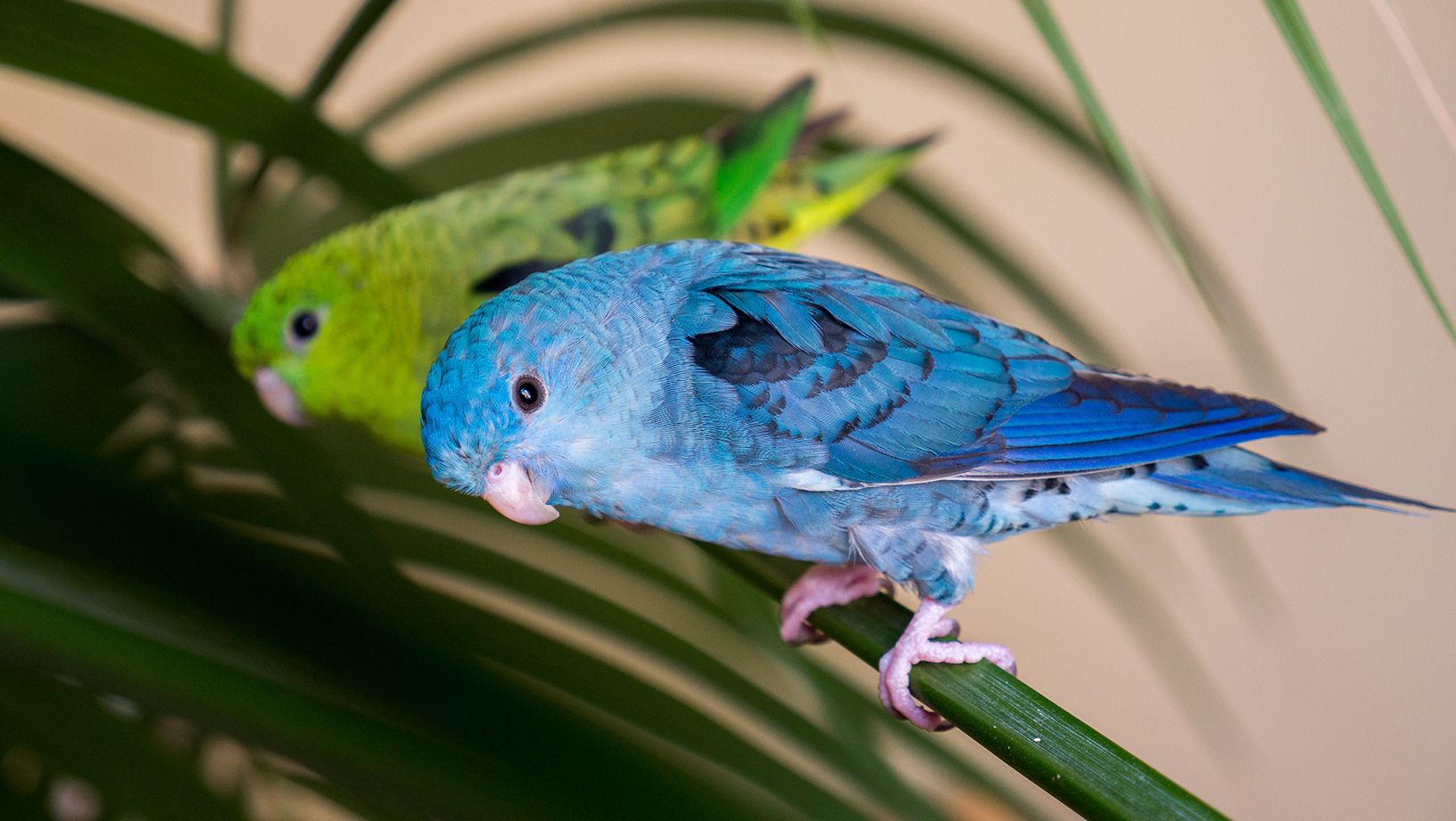
In this Article
Lively Lineolated Parakeets!
Lineolated parakeets are small birds that are native to the forests of Latin America. Also known as “barred parakeets” or “linnies” for short, they get their name from the line (or bar) style markings on their feathers. Lineolated parakeets are technically small parrots, but they tend to be a little calmer and quieter than their larger parrot relatives. Fun fact; Lineolated parakeets seem to like “lines” so much that even when they rest, they have been known to adopt a semi-horizontal position with their heads almost in line with their tails!
Lineolated parakeet species profile
Size: Lineolated parakeets grow up to 6-7" (15cm-18 cm) from head to end of tail.
Lifespan: On average, Lineolated parakeets live for 8 to 10 years.
Behavior: Parakeets are social animals and thrive living in same-gender pairs and groups. In addition to social interaction between birds, your parakeet needs at least 30min every day of one-on-one bonding with you too!
Temperament: Lineolated Parakeets are social, curious, and are so smart they can even learn tricks and commands like “step up” and their own name. A parakeet whose needs are met is generally calm, easy to handle and full of personality.
Setting up your Lineolated parakeet habitat
Lineolated parakeets need a clean, enriching enclosure where they can safely play, explore, and rest.
Enclosure size and placement
Minimum size: 18” x 18” x 24”
Recommended size 20”x 20” x 30” or larger
Larger is better, especially if you plan to house more than one bird.
- Keep the enclosure at or below eye level
- Avoid placing it near:
- Kitchens or non-stick cookware
- Strong smells, smoke, or household cleaners
- Drafts, windows, or direct sunlight
- Cover the cage at night to help your parakeet feel safe and secure
Enrichment and accessories
- Provide at least three toys and rotate them regularly to keep playtime interesting
- Include a mix of puzzles, chewable items, and foraging activities
- Use a liner at the bottom of the enclosure and replace it as needed to keep things clean
- A T-stand or playpen lets your parakeet safely explore outside the cage (indoors only)
Bathing and grooming
- Offer a birdbath for splashing or soaking
- Gently mist your bird with warm water 2–3 times a week to help keep feathers healthy
Care and Feeding
Lineolated parakeets need a balanced diet, access to clean water, and consistent care to stay healthy and active.
Daily diet
- Pellet-seed blend: This should be your bird’s main food source.
- Keep the bowl about three-quarters full and refresh daily
- Remove uneaten food before refilling
- Fresh fruits and vegetables:
- Offer leafy greens, fruits, and grains every other day
- These help round out your bird’s nutrition and keep meals interesting
- Treats:
- Honey sticks and millet spray are fine in moderation
- Offer once or twice a month in small amounts to avoid obesity
Hydration
- Provide fresh, clean water at all times
- Use either a water bowl or a bird water bottle — whichever your parakeet prefers
- Check water sources daily and clean them regularly
Never feed your bird chocolate, sugar, fried foods, avocado, or human junk food. These foods can make your bird very sick.
[When to see a vet]
In addition to regularly scheduled appointments, contact your avian veterinarian if you notice the following signs:
- long periods sitting at the bottom of the enclosure
- decreased appetite or weight loss
- less activity and grooming
- feathers fluffed for long periods of time
- sneezing; discharge from eyes, nose or mouth
- runny droppings for more than two days
- constantly plucking feathers or feathers are falling out
- beak over gown/ not closing normally
Go to “find a vet” on AAV.org for help finding an avian veterinarian in your area.
SHOPPING CHECKLIST
- Cage habitat
- Minimum size 18”x 18” x 24"
- Recommended size 20”x 20” x 30” or larger
- fortified parakeet pellet diet
- seeds, fruits and veggies can be used in addition for treats or enrichment to chew on
- food bowls
- water bottle and/or bowl
- at least two perches (each a different thickness and height)
- A misting spray bottle and/or bird bath (for bathing)
- Ladder perch (additional to 2 other perches)
- toys
- habitat liner
- habitat cover (for nighttime)
- cuttlebone
Ready to learn more? This guide is a great starting place, but we encourage you to do more research on the individual species that you are keeping so that you can be as successful as possible!
FAQs
Are lineolated parakeets loud?
Lineolated parakeets are considered quieter than many other parrot species. They can still chirp and chatter, but their voices are soft and pleasant. They’re a good option for apartment living or households that prefer a more mellow companion.
Lineolated parakeets are considered quieter than many other parrot species. They can still chirp and chatter, but their voices are soft and pleasant. They’re a good option for apartment living or households that prefer a more mellow companion.
Can lineolated parakeets learn to talk?
Yes, some lineolated parakeets can learn to mimic words and sounds. While not all will talk, many can pick up short phrases or whistle tunes, especially with consistent repetition and positive interaction.
Yes, some lineolated parakeets can learn to mimic words and sounds. While not all will talk, many can pick up short phrases or whistle tunes, especially with consistent repetition and positive interaction.
Do lineolated parakeets need a companion?
They’re very social and thrive with a same-species companion. If you plan to keep a single bird, you’ll need to spend plenty of time interacting with them daily to meet their social needs.
They’re very social and thrive with a same-species companion. If you plan to keep a single bird, you’ll need to spend plenty of time interacting with them daily to meet their social needs.
How much daily interaction do they need?
Aim for at least 30 minutes of one-on-one bonding time each day. Even if your parakeet has a bird companion, regular human interaction helps build trust and keeps them mentally engaged.
Aim for at least 30 minutes of one-on-one bonding time each day. Even if your parakeet has a bird companion, regular human interaction helps build trust and keeps them mentally engaged.
What’s the difference between a budgie and a lineolated parakeet?
Budgies tend to be more vocal and active, while lineolated parakeets are generally calmer and more relaxed. Linnies also have unique “barred” feather markings and may rest in a nearly horizontal position, which is less common in budgies.
Budgies tend to be more vocal and active, while lineolated parakeets are generally calmer and more relaxed. Linnies also have unique “barred” feather markings and may rest in a nearly horizontal position, which is less common in budgies.
